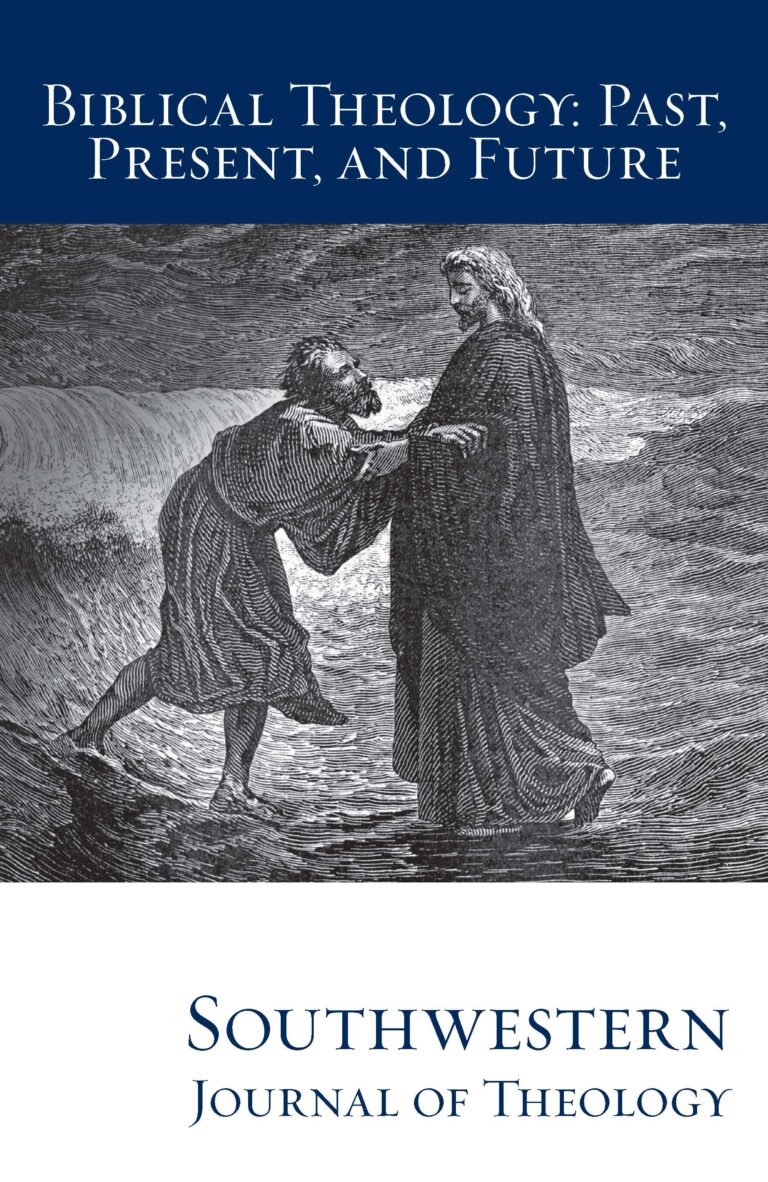
Biblical Theology: Past, Present, and Future (II)
Southwestern Journal of Theology
Volume 56, No. 1 – Fall 2013
Managing Editor: Terry L. Wilder
3 Volumes. By Urban C. von Wahlde. Eerdmans Critical Commentary. Grand Rapids: Eerdmans, 2010. 2075 pages. Softcover, $180.
Urban C. von Wahlde is professor of New Testament at Loyola University in Chicago. He has written a number of works on the Gospel of John. One significant aspect of his work has involved looking for clues concerning the history of the composition of John’s Gospel. He presents the culmination of his work along these lines in his three-volume commentary on the Gospel and Letters of John for the Eerdmans Critical Commentary Series. He contends that the Gospel of John went through three editions over a period of time from about AD 55-95 (50-55). He believes that an understanding of these three editions will allow for more precision in interpretation of the Gospel and will make it possible to trace the development of the theology of the Johannine community (2-5). In this review, I will focus upon volume one and describe briefly the three editions of the Gospel of John. Such a description will capture the central focus of von Wahlde’s massive project.
The first edition of the Gospel of John is a narrative about Jesus and his miracles or signs (58). Its attention to geographical details suggests that it originated in Judea (51). The narrative shows a gradual increase in hostility toward Jesus on the part of the Jewish leaders. Along the way, they disagree with one another about the significance of Jesus and his signs (59). The Christology of the first edition is “low” Christology consistent with a Jewish setting. No claims to divinity occur in the first edition (98-101). The first edition gives shape to the narrative of the Gospel. In the course of editing, parts of the original first edition were cut out (62).
The second edition was produced after the Johannine community experienced sharp conflict with the Jews, probably in Judea (52). Conflict with, and opposition from, the Jewish leaders is present from the start in the second edition. A “radical new theology” appears in the second edition (140). An important aspect of its theology is “high” Christology. “High” Christology manifests itself in claims to divinity that lead to conflicts with the Jewish leaders, known as “the Jews” (174-75). The second edition has a second author. It does not accurately represent the historical ministry of Jesus, but provides indications about the history of the Johannine community (143).
The third edition follows the “internal crisis” in the Johannine community that leads “the Elder” to write 1 John (52-54). The third edition of the Gospel of John incorporates the Elder’s insights from 1 John and addresses “new issues,” like the significance of the sacraments (54, 235). In terms of Christology, the third edition has the highest Christology. It “affirms the preexistence of Jesus” and “Jesus identifies himself as ‘I AM’” (309-10). The third edition also introduces elements “that would correlate the Johannine tradition with that of the Synoptics” (235). The third edition is the work of a third author.
In the second major part of volume one, von Wahlde traces the development of Johannine theology (395-560). Volumes two and three of the commentary proceed through the Gospel and Letters of John interpreting them in light of the three editions.
As the above summary shows, von Wahlde provides support for a common teaching of historical-critical scholarship, namely, that high Christology is a later development in the church’s teaching about Jesus. This is not a surprising finding for a critical commentary. It is an important finding, because von Wahlde’s work now provides detailed support for other theological treatments of John’s writings. Von Wahlde’s work supports a developmental view of New Testament theology. He adds more diversity to New Testament theology by showing that various theologies exist even in the editions of the writings of John. If Johannine theology was developing so radically, then what about the writings of other New Testament authors or communities? For anyone interested in New Testament theology, von Wahlde provides a thorough example of the challenges to the unity of New Testament theology that continue to arise from critical New Testament scholarship.
For someone, like me, who believes in high Christology that goes back to the teaching of Jesus himself and in the apostolic authorship of John’s writings, how is von Wahlde’s work helpful? Von Wahlde provides a helpful introduction to the view that the rough places (“aporias”) in the Gospel of John point to the stitching together of sources or to various editors (especially 10-55). He also provides a challenge to show that John’s aporias can be explained a different way. Andreas Köstenberger works at this in his recent work A Theology of John’s Gospel and Letters (145-50). Others have provided helpful explanations in the past. In light of von Wahlde’s substantial work, the discussion will continue.





